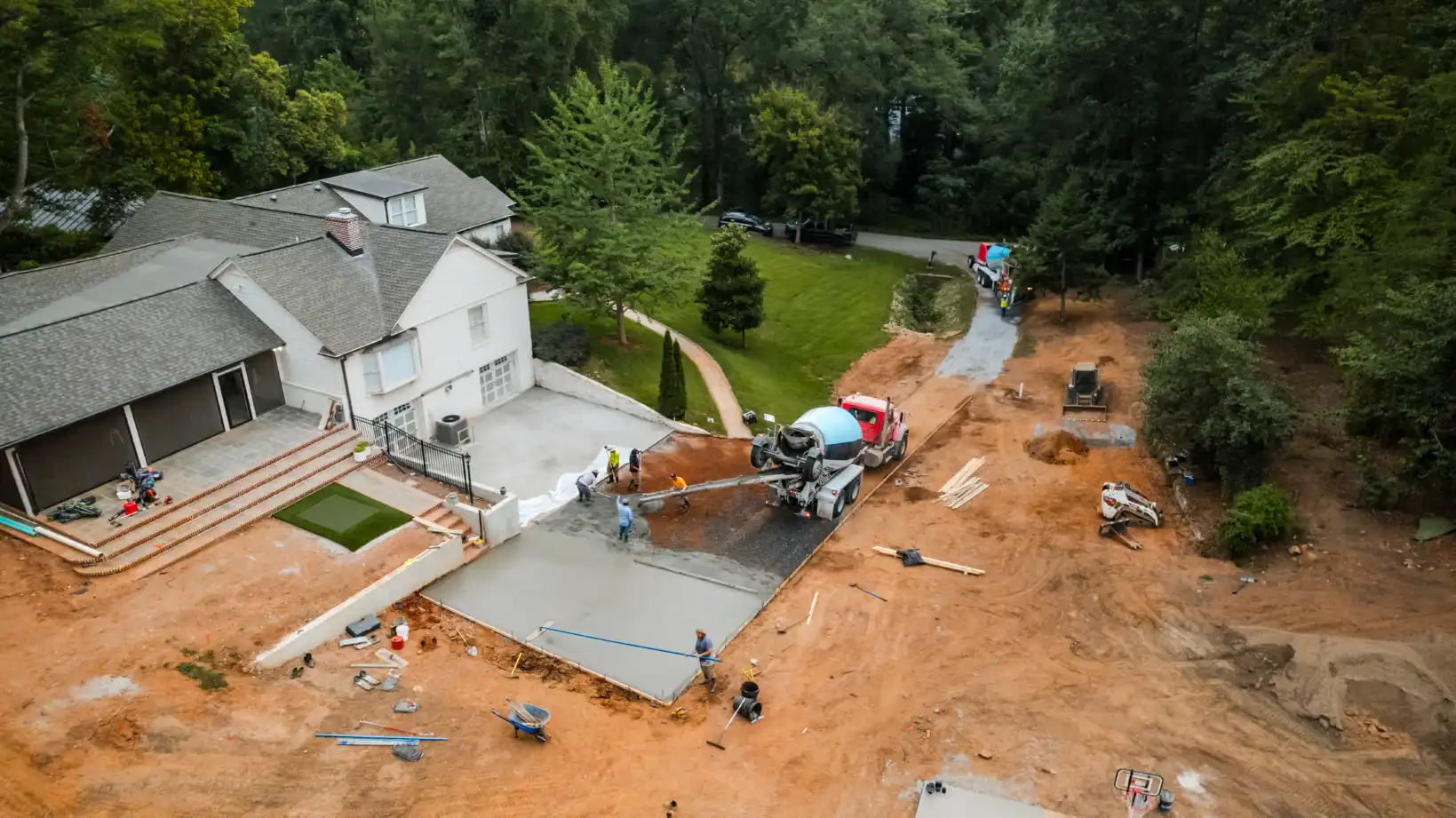Landscape Design Tips for Sloped Yards and Uneven Terrain

If your yard feels more like a hill than a backyard, you’re not alone.
Many homes across Greenville and the Upstate SC area sit on sloped or uneven lots, and while that can create headaches for mowing and drainage, it also offers incredible design potential when handled correctly.
At Peters Creek Grading, we specialize in landscape design for sloped yards, combining creative design with precise grading to turn tricky terrain into functional, beautiful outdoor spaces.
The Challenges of Working on a Slope
Designing a landscape on uneven ground isn’t as simple as planting around the slope. Without proper planning and grading, sloped yards can lead to:
- Water runoff and erosion
- Washed-out mulch and plant beds
- Uneven soil moisture (too dry at the top, too wet at the bottom)
- Unstable patios, walkways, or retaining walls
A beautiful design won’t last long if gravity and water are working against it. That’s why professional grading and drainage planning come first.
Design Solutions That Work for Sloped Yards
Creating a safe, attractive, and low-maintenance sloped yard requires blending structure with function. Here are several proven ways to make the most of uneven terrain:
1. Retaining Walls for Stability and Shape
Retaining walls are one of the best tools for taming steep slopes.
They hold soil in place, prevent erosion, and create flat, usable spaces for gardens or patios.
We design retaining walls using materials like natural stone, block, or decorative concrete that match your home’s look and blend seamlessly with your landscape.
2. Terraced Gardens
For multi-level yards, terracing creates layers that follow the natural slope.
Each level can serve a different purpose, vegetable gardens, flower beds, or seating areas, while helping control water flow.
Proper grading between terraces ensures that water drains from one level to the next without pooling or washing away soil.
3. Functional Pathways and Steps
Pathways and stone steps not only improve safety but also guide the eye and movement through your yard.
On sloped properties, we often use curved or switchback paths that make elevation changes feel gradual and inviting.
💡 Design Tip: Add low-voltage lighting along steps or edges to highlight elevation changes and prevent tripping hazards at night.
4. Drainage Integration
Even with great design, poor drainage can ruin everything.
That’s why Peters Creek incorporates drainage solutions like swales, French drains, or retaining wall weep holes directly into the design.
This hidden infrastructure keeps your landscape looking great and performing properly year after year.
5. Strategic Planting for Erosion Control
Certain plants, like groundcovers, ornamental grasses, and deep-rooted shrubs, naturally stabilize soil on hillsides.
We design plant layouts that reduce erosion while adding visual interest and seasonal color.
Why Grading Is the Foundation of Great Design
Before walls, patios, or plants go in, grading is what makes everything work.
It shapes the land to create usable space, control water flow, and set proper elevations for hardscapes.
At Peters Creek, our landscape designs always start with a detailed grading plan, because if the foundation isn’t right, nothing else will be.
Transform Your Sloped Yard with Peters Creek
Uneven yards don’t have to be a problem, they can be a design advantage.
With the right combination of grading, retaining, and creative planning, your property can become one of the most stunning in the neighborhood.
